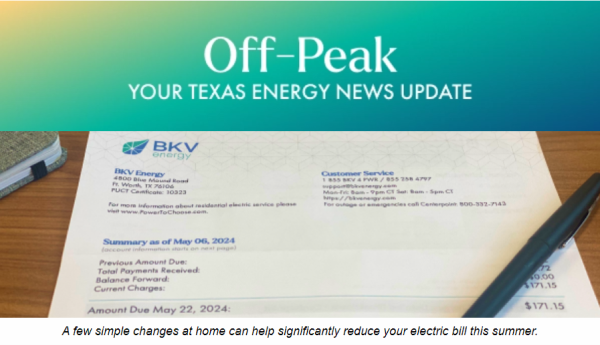Off-Peak: Spring Temps and Warm Weather Energy Saving Tips
February 2024 Email Newsletter
2 minute read • Last update July 2024

In this article
Dear BKV Energy Community,
As we navigate the final stretches of winter and look to the warmth of spring, we’re excited to share the latest developments and insights in this month’s newsletter.
Lubbock Transition Update
We’re pleased to report that the Lubbock transition has progressed smoothly, thanks to the hard work of our team and invaluable support of our customers. We’re on track to begin the flow of meters on March 26. This is a significant step forward in our commitment to providing simple and affordable energy to the Lubbock area.
Enhancements to Customer Service and Portal
In recent weeks, we’ve observed a spike in call volume, particularly regarding autopay setup, portal login difficulties, and mail delivery. We understand the importance of a seamless customer experience and are actively working to improve these processes. Your feedback is crucial to us — thank you for bringing these matters to our attention.
For assistance, please visit these articles:
Market Insights: Spring Weather and Energy Prices
In spring, warmer weather is expected to influence energy demand and pricing. Spring 2023 showed that mild temperatures resulted in reduced demand for heating, contributing to lower pricing during this period.
- Reduced Demand for Heating: Milder temps mean less heating is required, decreasing demand for natural gas and electricity. Reduced demand can lead to lower energy prices, especially in Texas, where price fluctuations can be more directly tied to changes in demand due to its market structure.
- Delayed Use of AC: Similarly, the need for air conditioning is less immediate or intense, delaying the seasonal spike in electricity demand that comes with hotter temperatures. This can contribute to a period of lower or stabilized prices before the summer demand increases.
- Wholesale Price Impact: In ERCOT’s energy market, wholesale electricity prices can fluctuate significantly based on demand and supply dynamics. Mild temperatures can lead to lower wholesale prices, which may be passed on to consumers in the retail market.
- Operational Efficiency: Power plants and grids operate more efficiently in milder conditions, which can help maintain lower operational costs. These efficiencies may help mitigate price increases from other factors.
- Renewable Energy: Texas is the #1 producer of wind energy, which can be affected by seasonal weather patterns. Favorable wind conditions increase wind energy production, contributing to a greater supply of renewable energy in the market and further impacting prices.
Note: While milder temperatures can decrease demand and potentially lower prices, other factors such as fuel costs, generation capacity, regulatory changes, and broader economic conditions can also significantly impact energy prices.
Looking Ahead
As always, we are committed to providing you with the best service and support. If you have any thoughts or questions, feel free to email me directly. Thanks for being a valued member of the BKVE community.
Written by Sam Luna
Sam Luna, Director of Product Marketing at BKV Energy, has over 20 years of experience in marketing, product development, and IT consulting. He oversees brand strategy, customer experience, marketing execution, and product innovation, and is passionate about Texas energy and technology.
Related articles

Get $50 off your electric bill!
Use code BKVEJOINUS50
Enter your zip code to shop BKV Energy's affordable, fixed-rate Texas electricity plans. Use the promo code for $50 off your electric bill.

